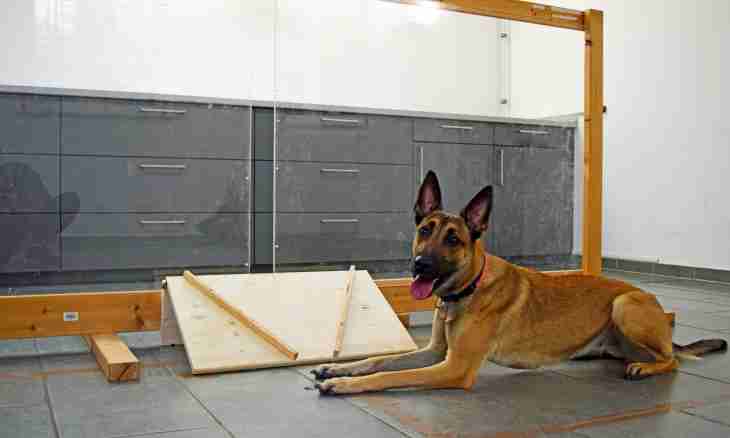Until recently was considered that dogs do not distinguish color and see the world in the black-and-white range. However the last researches of scientists showed other picture: colors of a dog are seen after all, however do it differently, than people.
Evident experiment
The popular belief in dog sight with ease was disproved by scientists. They placed various delicacies in tight boxes and marked each box with sheets of different flowers. The most preferable food – crude meat, was marked in dark yellow color. As a result, experimental dogs without effort could correlate the food preferred by them and color. And even after researchers replaced a dark yellow leaf with bright yellow, wishing to learn, dogs are guided by color or by its brightness, animals all the same persistently went to the necessary box waiting for delicacy.
Types of flasks
In general, the structure of an eye of the person and a dog is quite similar. Only versions and a ratio of sticks and flasks differ. Flasks is a type of the photoreceptors located on an eye retina. Their person has three views, and everyone is responsible for own range of the perceived color. Some flasks are sensitive to orange and red, others react to green and yellow, the third catch violet, blue and blue. Dogs have no flasks perceiving red. The sight of dogs is similar to sight of people color-blind persons: they do not see a difference between green and red, orange and yellow.
50 shades of gray
But dogs far better than the owners distinguish shades of gray. The reason of it is that dogs on a retina of an eye have more sticks which are also photoreceptors. At the same time they are much more sensitive in comparison with human. It helps dogs to see better against the background of the dark earth.
Day and night sight
People better see in the afternoon, than at night. At dogs everything occurs on the contrary. The person in the center of a retina has a so-called yellow spot – area in which the maximum concentration of flasks is observed while sticks are on the periphery. On a yellow spot the maximum quantity of light gets, and it provides to people visual acuity. At dogs the yellow spot is absent. Contrary to popular belief, in the afternoon they see far worse than people. On average human sight in daylight three times more sharply than dog. Besides, dogs poorly see close: objects which are at distance of one and a half meters at them blur. But in twilight the dogs are capable to give odds to people. Because of a large number of sticks on a retina they perfectly are guided day at this time. Also dogs very precisely count distance to the object which interested them.

